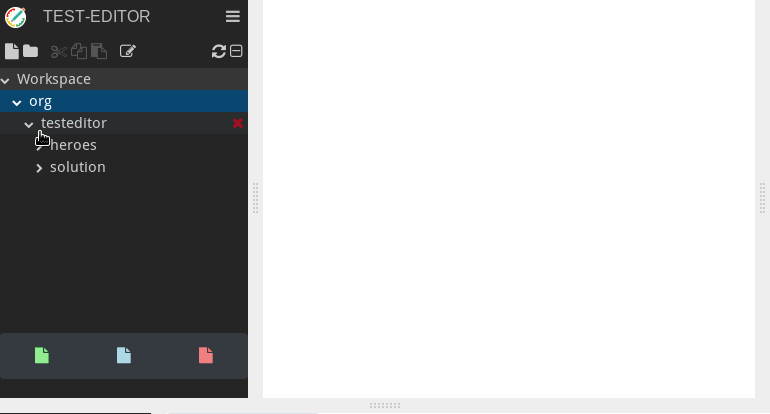Write Your First Test Specification in Five Minutes
Estimated reading time: 5 minutes
Test specifications are expectations that the software under test should satisfy. In a test first environment, they are written before the actual feature is implemented. There are only minimal rules as to how these specifications should be written. It is however good practice to follow a given-when-then pattern to group details. Each test specification should describe a non trivial, focused domain expectation. Each specification will eventually be implemented by a test case. A test specification is covered through non failing test cases that implement this specification.
How do I write specifications?
The software under test that is used for this example is an implementation of the heroes tutorial of the angular framework (see here).
You want to know more about the software that is tested here? read more
You want to know more about how to install the Test-Editor, getting started to write specifications? read more
Given you have a running instance of the Test-Editor, the following (trivial) steps suffice:
- navigate to (or create) the folder to hold the specification
- create a new file with the extension ‘.tsl’ (e.g. CreateHero.tsl) in a directory (e.g. org/testeditor/heroes) by means of the create button in the upper left corner of the Test-Navigator
- hit the
RETURNbutton on your keyboard to create the file. - Write each aspect of the specification (specification steps):
* Given: I am on the heroes page
* When: I create a hero named "Sancho"
* Then: The hero should be the last one of the list

- To save all your newly created files, type
CTRL + S.
That’s it. The first specification is in place.
How do I get a running test-editor-instance?
If you want to know how to implement and execute a test case covering this implementation read more
If you want to know more about how specifications can and should be written read more
Some reflections
The specification is expected to be written by a domain expert before the implementation is begun. Its function is manifold.
- It works as an intention carrying document that helps the tester and developer to understand the requirement of the requested feature.
- It provides a clear communication artifact for the domain expert, the tester and the developer that is used to clarify and adjust expectations.
- It is incomplete until implemented by test-cases that work as acceptance criteria for the feature
It is quite common to have the specification change (slightly) when actually implementing the feature. Even under change, the specification must remain the guiding principle for the tests.
The domain expert can write down specifications without having to think about the tooling itself. Writing specifications requires minimal knowledge about the Test-Editor itself and the language to be used to describe specifications.
Specifications contain specification steps. Specification steps start a line with ‘*’. They can be multiline and hold UTF-8 characters. Implementations of a specification must make sure to implement each specification step.